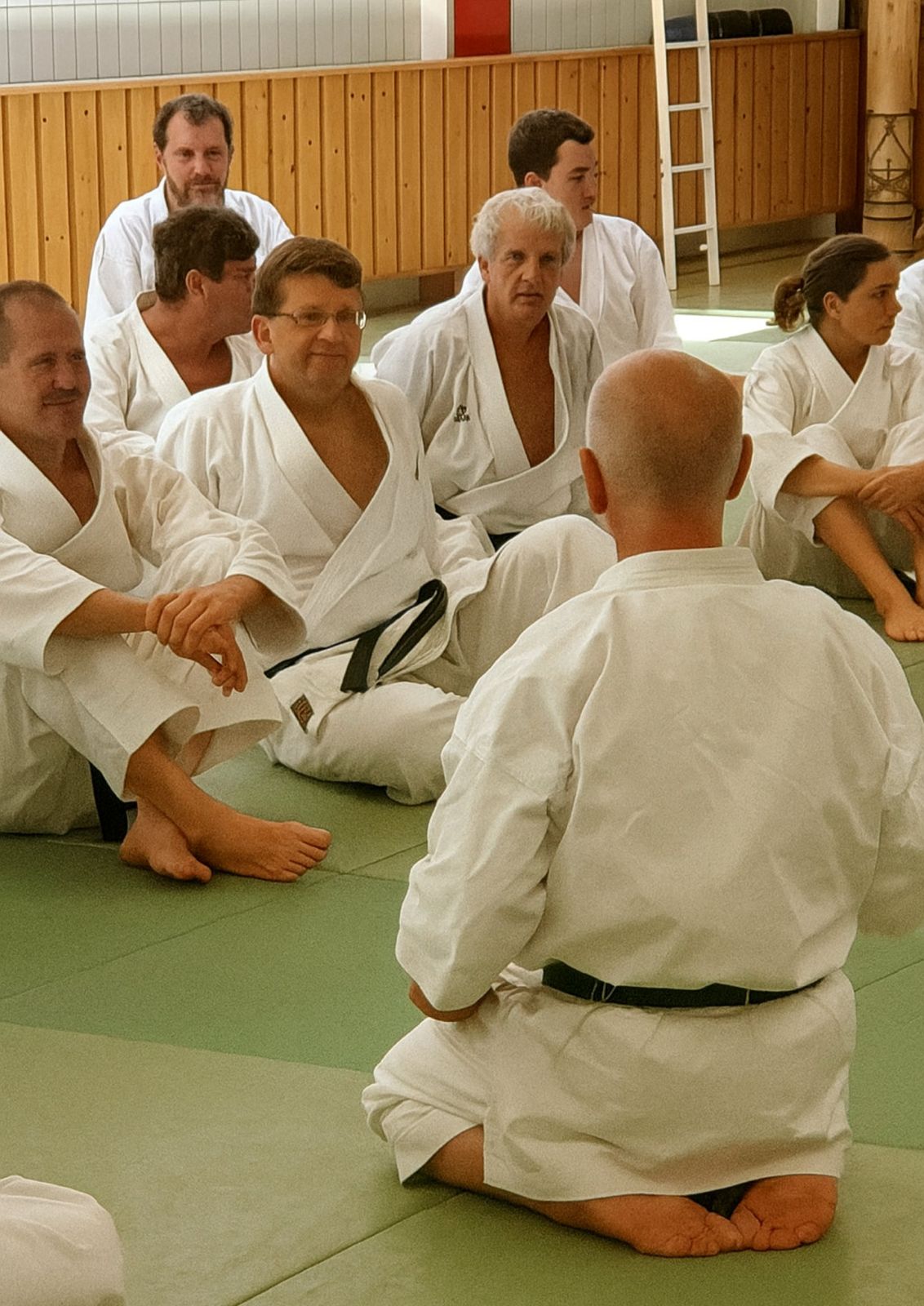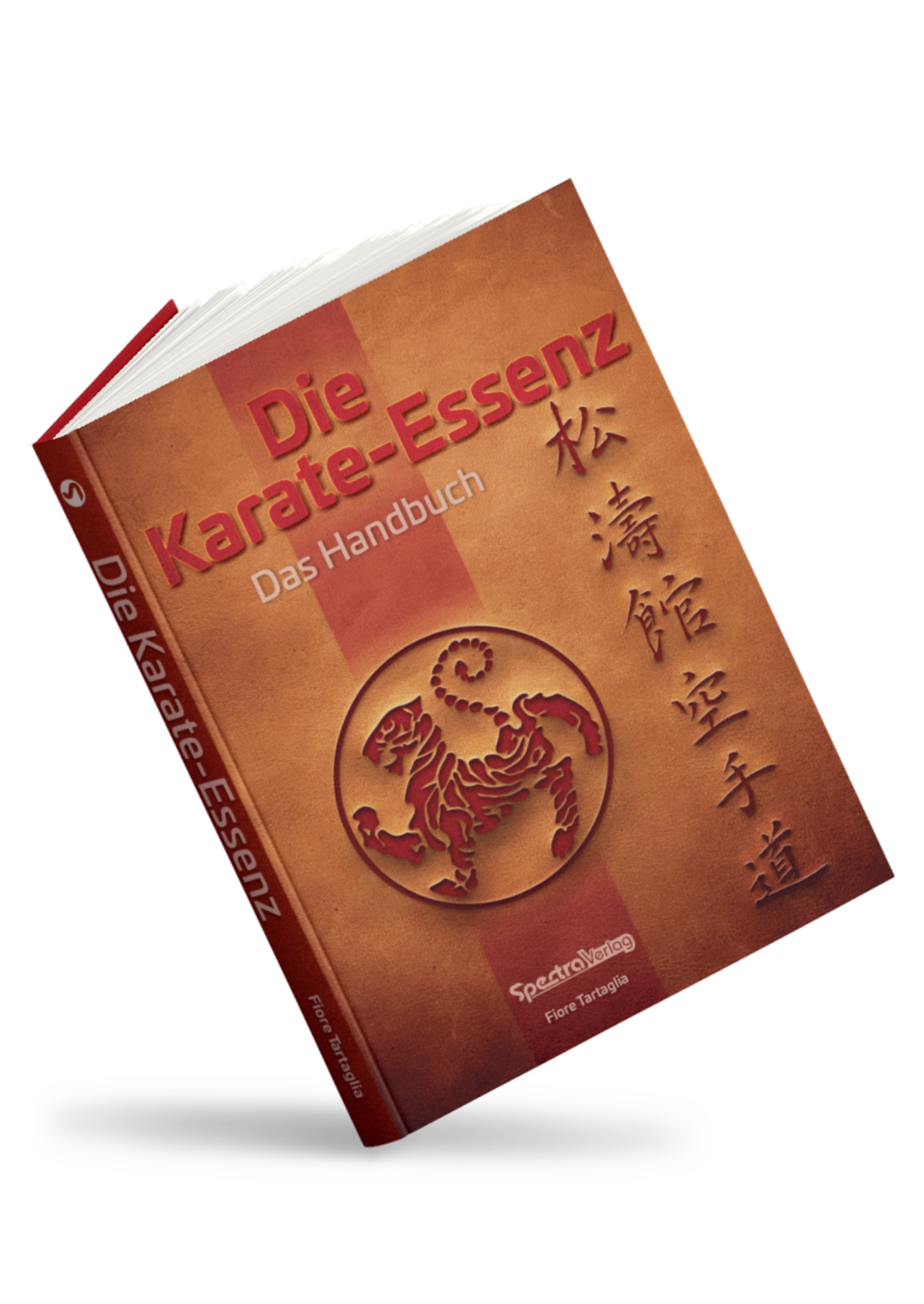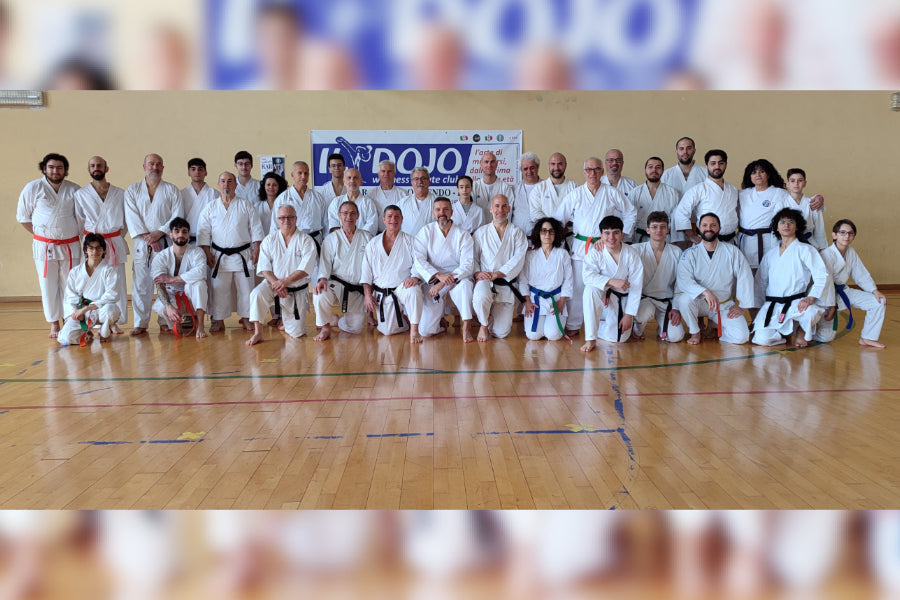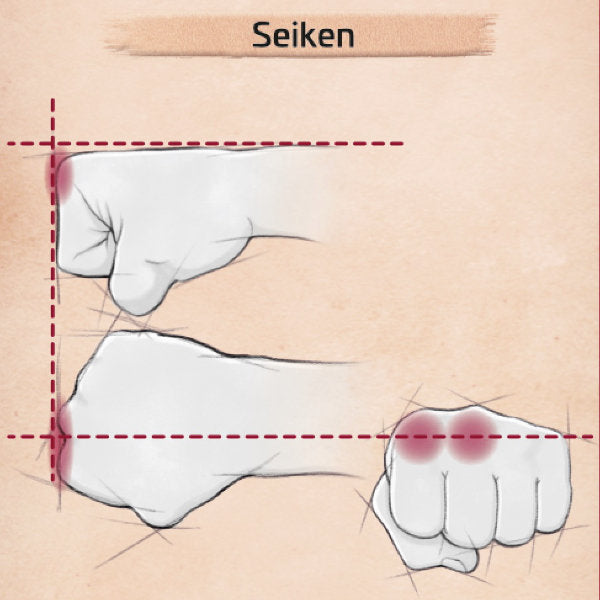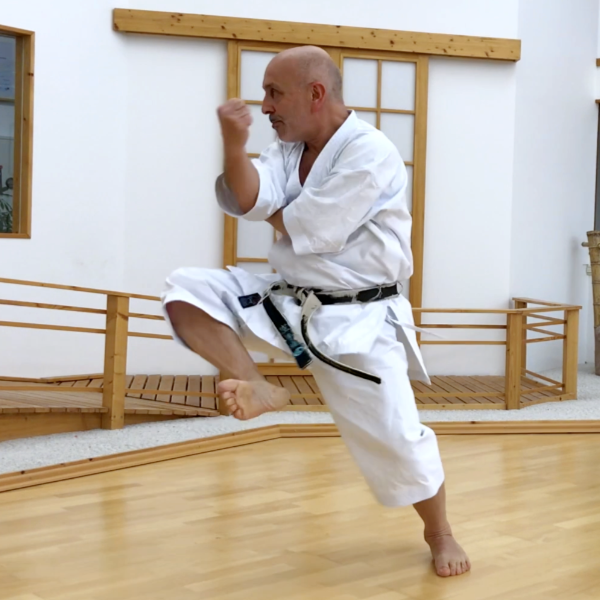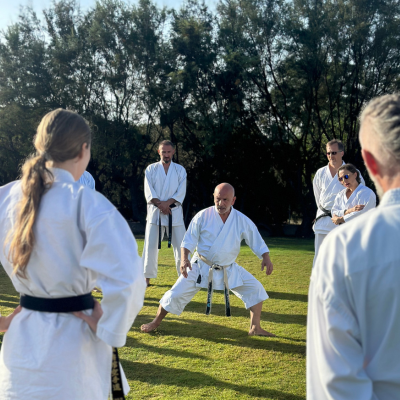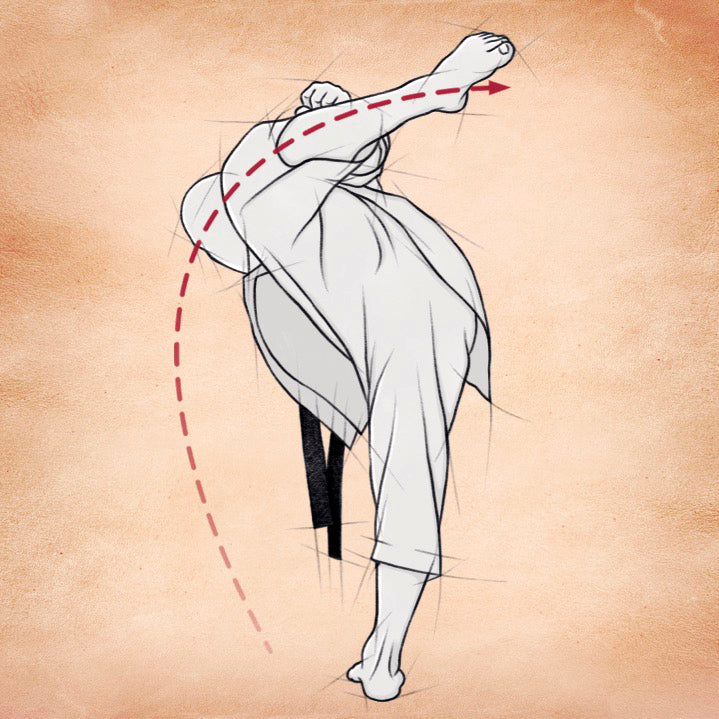
Two old friends
We invited Fiore Tartaglia (7th Dan Shotokan) and Schlatt (6th Dan Shotokan) as guest instructors to our seminar on April 20, 2024. Although the two have known each other for over 40 years, they had never previously worked together as instructors for a seminar. Therefore, we as a club are very proud to have brought these two together as coaches.
140 participants from six different German states attended our seminar and had the opportunity to train under these two friends. We divided the group into levels from beginners up to 4th Kyu and from 3rd Kyu up to Dan.
The first group, which consisted of beginners up to 4th Kyu, was trained initially by Fiore. For his two sessions, he focused on the kata Heian Nidan. He and the group examined the kata sequence by sequence and tried out some of the corresponding bunkai passages with the trainees. The bunkai was composed of the closest possible techniques to the kata in order to offer an application that was as true to the kata as possible. Accordingly, correct movement sequences were of course important and were practiced repeatedly. Schlatt practiced the katas Taikyoku Shodan, Heian Shodan, and Heian Nidan with the group throughout the morning, and Heian Sandan and Heian Yondan in the afternoon. He practiced the katas slowly with the group so that he could focus precisely on the movements and, above all, to work on the stance, which must be stable as the foundation of the kata. This meant that the sessions were still physically demanding, even though the actual movement sequences were slower. Especially after the twists and turns, it was important for him to be as stable as possible and to be able to align himself appropriately.
After the lunch break, the group met for a Mondo session led by the two trainers. This gave participants the opportunity to ask specific questions about the sessions or to listen to the two masters talk outside of the course's topic.
The first session for Group 2 (3rd Kyu and above) was initially led by Fiore. In his first session, he integrated body flexibility into general evasive movements. These evasive movements were to be as minimal as possible. His goal was to suppress the fighting instinct and promote the joy of successful movement. Over the course of the session, we were to attempt to implement the evasive movements with the help of a partner. As an additional lever, he used the bo during partner exercises to make the sequence a bit more exciting. At the end of the session, Fiore demonstrated the origin of these evasive movements, which can be found in the kata Sochin. Schlatt then took over the training and began with Kihon. Not only did he challenge the group with technical variations and combinations, but during the breaks, he also explained the origin of word parts and their meanings in both written and spoken language. Thus, his training not only challenged the body but also encouraged the mind to stay on track and reflect on the characters. After the lunch break, Fiore was again responsible for the second group and worked the group through a movement sequence for the kata Basadai. It was important to him to point out that this was not a bunkai of the kata, but rather a free movement formula that worked on the arm and leg patterns separately. The patterns were then put together with a partner in a practical example, but again with the aspect of free and limited movement and not as a bunkai. He also put the teams under pressure by severely restricting the space for maneuvering by practicing against walls. Finally, it was Schlatt's turn again. He built on his first unit and looked with the group at what the basic katas have to offer after the kihon. While walking, the participants were asked to consider what the individual katas were intended to convey and train. In between, Schlatt brought the group together again and shared his thoughts on the individual katas, figuratively looking for katas that had the same teaching intentions, this time only in the dan segment. As soon as their minds were occupied again, he had the group gather again in a small space and run the katas in absolute close proximity to the others before the entire thought process for the next Heian kata began again.
We thank everyone for the large number of participants and your positive feedback on the course. Our thanks also go to the two masters for making this day so interesting and enjoyable, and we hope to welcome both trainers and you karatekas back in the future.
Text: Aaron Polland
Images: Aaron Polland / Roy Hoppe

